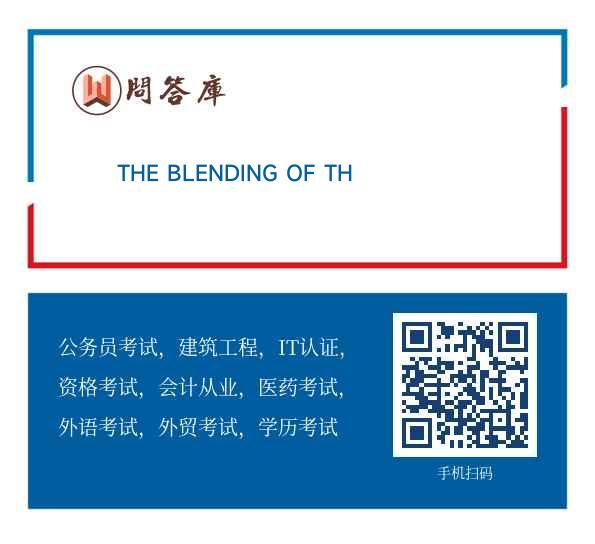THE BLENDING OF THE UNITED STATES For years J
问题详情
THE BLENDING OF THE UNITED STATES
For years, Jorge Del Pinal"s job as assistant chief of the Census Bureau"s Population Division was to fit people into neat, distinct racial and ethnic boxes: white, black, Hispanic, Asian or Native American. As the son of an Anglo mother and a Hispanic father, however, he knew all along that the task was not always possible.
For the 2000 decennial census, that will no longer be the case. For the first time, the census forms "will allow people to check off as many races as apply. As a result, the Census Bureau should obtain a better picture of the extent of intermarriage in the United States.
In the absence of such a direct method, a few years ago ,veteran demographer Barry Edmonston used sophisticated mathematical modeling techniques to calculate how intermarriage is changing the face of the United States as part of an immigration study he directed for the National Research CounciIof the American Academy of Sciences. His research was summarized in a report entitled The New Americans: Economic, Demographic and Fiscal Effects of Immigration. But as the Canadian - born, white husband of sociologist Sharon Lee, a Chinese - American, Edmonsto really needed no" computer to understand the transformation under way in this society. He and his family are living, breathing participants.
The face of America is changing literally. As former President Clinton has said, "within 30 or 40 years, when there will be no single race in the majority in the United States, we had best be ready for it." For his part, Clinton is preparing for that time by talking about racial tolerance and the virtues of multiculturalism. Others are debating immigration policy. Almost all discussion focuses on the potential divisiveness inherent in a nation that is no longer a predominantly white country with a mostly European ancestry.
But afoot behind the scenes is another trend that, if handled carefully, could bring the country closer together rather than drive it apart. This quiet demographic counter- revolution is a dramatic upsurge in intermarriage.
Edmonston"s study projected that by 2050, 21 percent of the U.S. population will be of mixed racial or ethnic ancestry, up from an estimate of seven percent today. Among third - generation Hispanic and Asian Americans, exogamy - marriage outside one"s ethnic group or tribe is at least 50 percent, he and others estimate. Exogamy remains much less prevalent among African Americans, but it has increased enormously, from about 1,5 percent in the 1960s to 8 to 10 percent today.
Such a profound demographic shift could take place while no one was watching because, officially, no one was watching. Federal agencies traditionally collected racial data using a formula — one person, one race similar to the time - honored voting principle. Thus, the Census Bureau could estimate that on census forms no more than two percent of the population would claim to be multiracial. In the absence of a more straightforward count, no one could know for sure what the demographics are.
That"s about to change. After the 2000 census, the U.S. Government should have a better idea. In 1997, the Office of Management and Budget, which oversees federal statistical practices, approved a directive allowing people to check as many racial boxes as they believe apply to them. The shift was a compromise between the demands of some interest groups that wanted the addition of a "multiracial" box, and those that objected to any change, fearing dilution of their numbers.
Meanwhile, in the absence of Official numbers, with the heightened tension surrounding racial issues, and with the mutual suspicion that exists among competing racial and ethnic interest groups, there"s little agreement on what intermarriage will mean for U.S. society in the future.
Melt
A.Y
B.N
C.NG
参考答案
正确答案:A
解析:文章的开篇即谈到了“For the 2000 decennial census, that will no longer be the case”,但是在2000年举行的10年一次的人口普查却不是这样;作者说到As a result,the Census Bureau shouldobtain a better picture of the extent of intermarriage in the United States,这里只提到了“异族通婚”,虽然没有提及“人口的准确数量”,但从常识而言,人口普查的第一要义就是查人口的准确数量。
